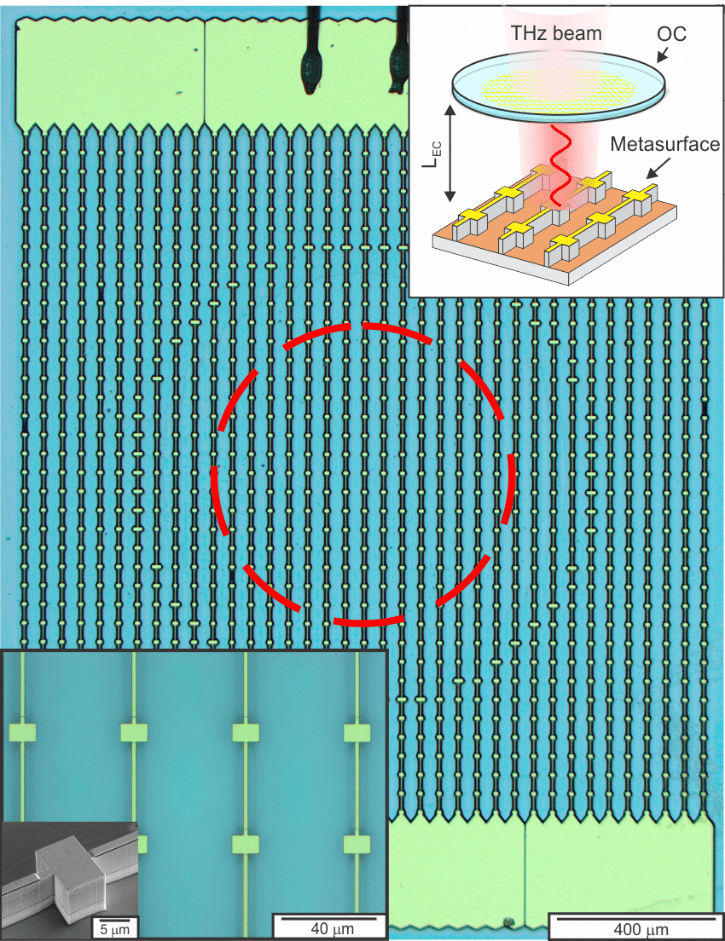
The heart of a QC-VECSEL is the amplifying metasurface, in which a reflectarray of antenna-coupled THz QC-gain elements with subwavelength spacing operate collectively to amplify and reflect incident THz radiation. Ordinarily, that occurs through an array of ridge antennas, each of which is loaded with QC-material which must be injected with current in order to operate. In a recent paper published in Applied Physics Letters, Christopher Curwen and co-workers showed that by transitioning from a ridge based metasurface to a patch based metasurface, the power consumption was reduced by a factor of four compared with the existing state of the art. This allowed metasurfaces to operate that consume less than 1 Watt power. Since these QC-lasers operate at cryogenic temperatures (usually 77 K), the reduced power is a big deal – it means much less liquid nitrogen is consumed, or a smaller cryocooler can be used. This approach is very promising for the development of THz QC-VECSEL local oscillators that can be operated for heterodyne receivers for astrophysical applications.
